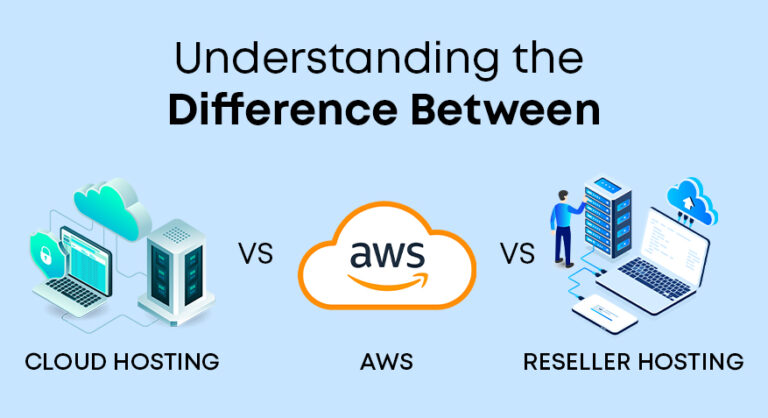Success in project management is arguably measured by completing tasks on time, within budget, and to the satisfaction of stakeholders. But behind such metrics lies an indispensable yet oft-overlooked component: the emotional and mental wellness of the team members concerned. This blog goes into the unseen world of project management, looking at how emotions play a crucial role in team dynamics and how project managers can foster a healthier workplace.
The Emotional Landscape of Project Management
Understanding the Human Element
Project management is not a process or a timeline but fundamentally people. Each member of the team has a unique set of emotions, motivations, and challenges that he or she brings to the table. As a project manager, it’s vital to realize that every decision, every deadline, and every conflict can evoke strong feelings.
Imagine Sarah, the excellent team player, creative and collaborative. However, when the project deadlines approach, the whole world rests on her shoulders. The enthusiasm fades away, and the spark that fueled her ideas faded under pressure. The story of Sarah is not unique; it tells the story of how emotional well-being directly impacts performance and teamwork.
The Power of Positive Emotions
Positive emotions such as joy, enthusiasm, and satisfaction bring about teamwork and innovation. When you make people feel supported and valued, they think more creatively and work more effectively as a team. A positive atmosphere offers:
- Team Collaboration: With a comfortable atmosphere, individuals will be open to one another and are more willing to share their ideas on collaboration. During brainstorming, for instance, trusting members are most likely to express out-of-the-box ideas, which means producing new solutions to problems.
- Rewarding Contribution: Recognition of individual’s efforts improves team members’ morale and motivation. Celebrating small wins re- energizes the team by keeping them in their purpose.
- Resilience: A psychosafe team is that team that is likely to bounce back from setbacks easily. In case of challenges in a task, they can collaborate and thus result in one unit, which is stronger.
Consequences of Negative Feelings
On the opposite side, negative feelings-such as stress, anxiety and frustration-are barriers to success. They cause much conflict and low productivity, plus some failure of projects.
Tom is a project manager that was hit by the alarm clock of increasing results pressure. When the deadlines near, he becomes short-tempered and creates a strain in the team. Misunderstandings become conflicts. Productivity and general performance drop drastically. This is only what is happening to Tom as a reflection of how unmanaged emotions can crush a project and tear team spirit asunder.
Emotional Triggers Identification
To understand what makes the emotional triggers, it is something the project managers must learn. Emotional triggers could be due to any form of emotional stimuli such as:
- Tension due to Deadline: The pressure of time may put a lot of anxiety and stress in team members’ minds.
- Undefined Roles: Unclear-defined roles make them frustrated, confused, and unable to find a proper way to follow their assignments.
- Resource limitation: Poorly available resources increase tension levels and contribute towards a terrible work environment.
- Conflict due to personalities: Personalities may conflict and create issues that impact collaboration.
By acknowledging these triggers, the heads of projects tend to avoid problems as early as they can, in a conducive environment.
Impact of Stress on Project Teams
Identifying Symptoms of Stress
Stress is an inevitable phenomenon in project management, and its symptoms are identified to allow for a good work environment. The frequent symptoms of stress include behavioral changes, and low productivity.
- Behavioral Changes: Search for some irritability, withdrawal, or lack of enthusiasm among team members.
- Productivity Declines: A marked deterioration in the quality or amount of their work may result from stress.
- Physical Signs: Stress could be the indicator which manifests physically by appearance of being tired, heads are pounding, or some illness.
- Absence of Presence: Continuous absenteeism by members of a team may indicate that all members of the team are stressed or experiencing some psychological problem.
The Chains of Neglected Stress
Ignoring stress can lead to disastrous outcomes for the person and the project as a whole. Chronic stress can encourage burnout, job dissatisfaction, and high levels of employee turnover.
Consider Lisa, a team member of the project, who has been working overtime for meeting deadlines. Gradually, her enthusiasm fades out, and she becomes increasingly disengaged. Burnout in Lisa not only affects her performance but also impacts the morale of the team. Her withdrawal is sensed by the colleagues, which results in a collective decrease in motivation.
Support Awareness of Mental Health
Create a culture at work with project managers that encourages awareness of mental health. An effective way is by creating a platform in which the participants are given the freedom to talk out their mental illness problems and issues without fearing stigmatisation.
Hold Open Discussion
Open talks on mental health can end stigma in the topic of mental illness. Project managers can kick-start such talk by :
- Sharing Personal Experiences: The sharing of a project manager’s personal stories on stress and mental illness tends to normalize the conversation among project managers.
- Safe spaces: It creates trust and encouragement to share the problems for a team member when those feel comfortable sharing their personal struggles.
- Regular check-in: One-on-one is conducted frequently. This usually allows the team members enough opportunity to voice their concerns and feelings.
It can be quite helpful to hold a regular check-in session, during which members are encouraged to speak openly about their difficulties. You might start the process by telling your team how you cope with stress so that the others can learn from it and share.
Support Tools
Resources can be provided to empower the team. These can include Employee Assistance Programs, mental health workshops, and access to counseling.
Discuss with the team during a team meeting sharing these resources. This makes you convey that you actually care about the well-being of your team members while normalizing the conversation on mental health.
Types of Resources to Consider
- EAPs: EAPs provide confidential counseling services, and other resources are extended to employees dealing with issues in personal or professional areas.
- Workshops: Stress management, emotional intelligence, and mindfulness can also be held in workshops so as to empower your team members with effective coping mechanisms.
- Online Resources: These may include articles and webinars related to managing one’s mental health.
Role of Emotional Intelligence in Project Management
Building Emotional Intelligence Skills
Emotional intelligence (EI) is the ability to recognize, understand, and manage our own emotions while also recognizing and influencing the emotions of others. High EI can significantly affect team dynamics and project success.
Project managers can build their emotional intelligence skills in the following ways:
- Practicing Self-Awareness: Understanding one’s emotion and how it influences others. One can develop self-awareness by introspecting his response and seeking honest feedback from colleagues.
- Exercising Self-Regulation: Proper control of emotions, mostly when under pressure, must be practiced. Techniques including deep breathing, taking break time, or mindfulness, will help the project managers remain composed and focused during times of pressure.
- Cultivating Empathy: Sharing the emotions of teammates makes for a supportive working environment. Listening to teammates empathetically promotes teamwork by legitimizing their emotions.
- Building Social Skills: Healthy relationships and effective communications with the team are essential for a successful project. Some skills that can better team dynamics are conflict resolution, active listening, and effective communication.
Benefits of High Emotional Intelligence
Such a team, led by an emotionally intelligent project manager, is well-knit, collaborative, and more productive. Conflicts are handled efficiently, and team members feel valued and understood by such a leader.
Imagine a project manager who can tell when a particular team member is feeling overwhelmed. Providing support and understanding strengthen the overall team dynamic while helping the individual.
Techniques for Managing Emotions
Intentional efforts need to be made regarding emotional management in project management. Here are a few methods that can be adopted by project managers:
Mindfulness Techniques
Mindfulness techniques would assist the team members in managing their stress and staying focused. Meditation, deep breathing, or even mindful walking can be a part of the employee’s workday to re-align and refocus.
Use of Mindfulness in Workplace
- Mindfulness Break: This is where the team member will take short breaks during the workday for mindfulness technique usage.
- Guided Sessions: Schedule guided mindfulness sessions or workshops for the team members.
Regular Check-Ins
Holding regular one-on-one interactions between project managers and their members opens the floor for discussing how they are feeling emotionally. In that setting, managers can ask about workload, stress, or anything needed.
Making Check-Ins Effective
- Provide a Safe Environment: Create an environment wherein the employee will feel comfortable opening up about the issues.
- Open-Ended Questions: Engage open-ended questions that enable them to explore their experiences and emotions further.
Team-Building Activities
Participation in team-building activities helps them bond with each other on personal levels. This bonding builds a more caring environment that makes the members feel safe to relate their emotions and struggles.
Team-Building Ideas
- Group Outings: Plan a team outing or retreat that is team building-oriented and relaxing.
- Workshops: Team building workshops with a focus on communication, collaboration, and high emotional intelligence.
Balancing Work and Well-Being
Work-life equilibrium. Good mental health in project management requires a balance between work commitments and individual well-being.
Motivate work-life balance
Project managers should inspire their team members to maintain good work-life balance. This can be practiced in the following ways:
- Setting Realistic Expectations and Deadlines: Avoid setting up unrealistic expectations, which would add to the stress level. Big projects are split into smaller, manageable ones, with clear milestones.
- Regular Breaks and Time Off: Encourage members to take time off during the day, including vacations, to recharge themselves.
Leading by Example
As a project manager, you are the model of good work-life balance practices. The people around you will more likely to be a follower if the leaders are concerned about their well-being.
You can bring policies that promote work-life balance by offering flexible working hours or setting aside time for wellness activities. Demonstrating care for mental health allows you to create a culture in which team members feel empowered to make time for their own well-being.
Why is mental health important in project management?
Mental health is critical in project management as it affects team dynamics, productivity, and overall project success. When team members feel supported and valued, they work more effectively and collaboratively, which leads to a healthier work environment and better project outcomes.
How can emotional well-being influence a project?
Emotional well-being fosters creativity, teamwork, and resilience. Positive emotions, like enthusiasm and satisfaction, enhance collaboration and innovation, while unmanaged stress or anxiety can lead to conflicts, burnout, and a decline in productivity.
What are common emotional triggers in project management?
Some common emotional triggers include deadline pressure, undefined roles, resource limitations, and personality conflicts. Identifying these triggers helps project managers address potential issues early, creating a more supportive environment.
How can a project manager identify stress within the team?
Project managers can watch for signs such as behavioral changes (irritability, withdrawal), decreased productivity, physical symptoms (fatigue, headaches), and absenteeism. Recognizing these symptoms early enables proactive support for team members.
What can project managers do to reduce stress among team members?
Project managers can foster open discussions on mental health, hold regular check-ins, offer access to support resources (e.g., Employee Assistance Programs), and encourage a work-life balance by setting realistic expectations and encouraging breaks and time off.
How does emotional intelligence impact project management?
High emotional intelligence (EI) helps project managers understand and manage both their own emotions and those of the team. Skills such as self-awareness, empathy, and conflict resolution improve team dynamics, making the team more cohesive and productive.
If you're looking for any services regarding Digital Marketing or Website Developement, Please Contact now.






Leave a Comment